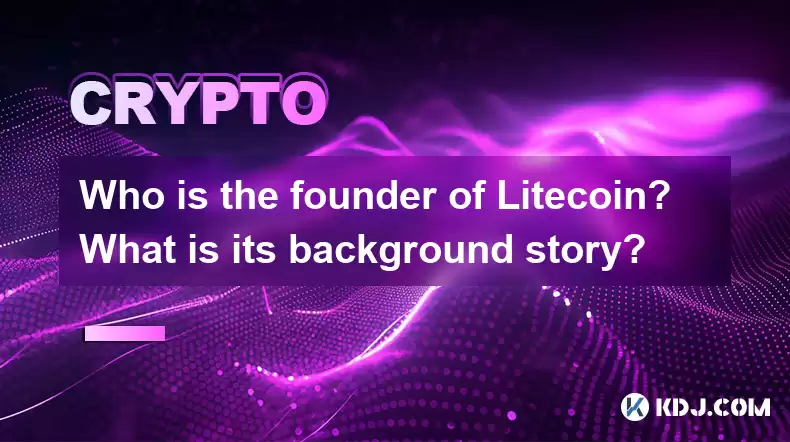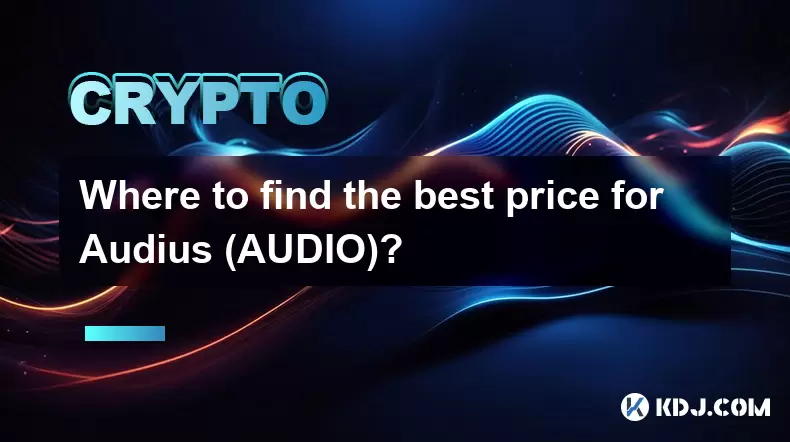-
 Bitcoin
Bitcoin $118900
-2.33% -
 Ethereum
Ethereum $4288
-0.13% -
 XRP
XRP $3.151
-3.21% -
 Tether USDt
Tether USDt $1.000
0.02% -
 BNB
BNB $809.5
-1.17% -
 Solana
Solana $175.7
-4.75% -
 USDC
USDC $0.0000
0.01% -
 Dogecoin
Dogecoin $0.2246
-5.75% -
 TRON
TRON $0.3473
2.19% -
 Cardano
Cardano $0.7809
-5.18% -
 Chainlink
Chainlink $21.38
-3.48% -
 Hyperliquid
Hyperliquid $43.29
-5.53% -
 Stellar
Stellar $0.4375
-3.21% -
 Sui
Sui $3.685
-6.68% -
 Bitcoin Cash
Bitcoin Cash $595.2
3.50% -
 Hedera
Hedera $0.2483
-6.60% -
 Ethena USDe
Ethena USDe $1.001
-0.01% -
 Avalanche
Avalanche $23.03
-5.28% -
 Litecoin
Litecoin $119.5
-5.02% -
 Toncoin
Toncoin $3.395
-0.07% -
 UNUS SED LEO
UNUS SED LEO $9.007
-1.19% -
 Shiba Inu
Shiba Inu $0.00001304
-5.44% -
 Uniswap
Uniswap $11.35
1.57% -
 Polkadot
Polkadot $3.898
-5.43% -
 Cronos
Cronos $0.1671
-0.16% -
 Ethena
Ethena $0.8121
-2.45% -
 Dai
Dai $1.000
0.02% -
 Bitget Token
Bitget Token $4.412
-1.73% -
 Monero
Monero $264.0
-0.64% -
 Pepe
Pepe $0.00001128
-8.12%
Who is the founder of Litecoin? What is its background story?
Former Google engineer Charlie Lee created Litecoin to address Bitcoin's limitations, offering faster transactions via a different hashing algorithm and aiming for a more accessible, efficient digital currency.
Mar 11, 2025 at 01:30 am

Key Points:
- Litecoin was created by Charlie Lee, a former Google engineer.
- Its background story involves a desire to improve upon Bitcoin's limitations.
- Litecoin's core innovation lies in its faster transaction times and different hashing algorithm.
- The project aimed to become a more efficient and accessible digital currency.
Who is the founder of Litecoin? What is its background story?
Litecoin, a prominent cryptocurrency often considered a "silver" to Bitcoin's "gold," was founded by Charlie Lee. Lee, a former Google engineer, launched Litecoin in October 2011. He was motivated by a belief that Bitcoin, while groundbreaking, had certain limitations that could be addressed. His background in computer science and his understanding of cryptocurrency technology provided the foundation for creating Litecoin.
The background story of Litecoin is intrinsically linked to Bitcoin's early development. Lee recognized the potential of Bitcoin's decentralized and secure nature but also saw room for improvement. Bitcoin's transaction times were relatively slow, and its block size presented scalability challenges. Lee aimed to create a cryptocurrency that addressed these issues, providing a faster and more efficient alternative.
Lee's vision wasn't to replace Bitcoin but to complement it. He envisioned Litecoin as a faster, more scalable, and more accessible digital currency, catering to a broader range of users and applications. This vision drove the development and implementation of key features differentiating Litecoin from Bitcoin.
One of the most crucial differences lies in Litecoin's use of the Scrypt hashing algorithm, unlike Bitcoin's SHA-256. Scrypt was chosen specifically to make mining Litecoin more accessible to individuals using standard computer hardware, reducing the dominance of specialized, energy-intensive mining operations. This design decision reflected Lee's desire for a more decentralized and inclusive cryptocurrency ecosystem.
The faster block generation time of Litecoin is another significant feature. While Bitcoin generates a new block approximately every 10 minutes, Litecoin generates a block every 2.5 minutes. This faster block generation time translates to quicker transaction confirmations and improved efficiency.
Beyond the technical specifications, Litecoin's background also includes a strong emphasis on community building. Lee actively engaged with the Litecoin community, fostering transparency and collaboration. This community-driven approach has been instrumental in Litecoin's continued growth and adoption. The project’s focus has consistently been on providing a reliable and user-friendly cryptocurrency experience.
The initial launch of Litecoin was relatively understated compared to Bitcoin's launch. However, its innovative approach and focus on addressing Bitcoin's limitations steadily gained traction within the cryptocurrency community. Over time, Litecoin has established itself as a significant player in the crypto market, demonstrating the success of Lee's vision.
Further details on Litecoin's Development and Features:
The development of Litecoin wasn't a solo effort. While Charlie Lee spearheaded the project, numerous developers and contributors have contributed to its ongoing improvement and maintenance. The Litecoin Foundation, a non-profit organization, was established to support the development and promotion of Litecoin. The foundation plays a critical role in coordinating efforts, funding development, and promoting Litecoin's adoption globally.
Litecoin's open-source nature allows for community contributions to its codebase. This collaborative approach ensures continuous improvement and adaptation to evolving technological landscapes and market demands. The community's active participation is a vital component of Litecoin's success and longevity.
Litecoin’s development history includes several upgrades and improvements to its functionality. These upgrades often focus on enhancing security, scalability, and usability. Such continuous development is crucial for maintaining competitiveness and relevance within the ever-evolving cryptocurrency landscape.
The ongoing development of Litecoin reflects its commitment to staying at the forefront of cryptocurrency technology. The project continuously seeks ways to improve its performance, security, and accessibility, aiming to provide a reliable and efficient digital currency solution for users worldwide.
Frequently Asked Questions:
Q: Is Charlie Lee still involved with Litecoin? A: While Charlie Lee stepped away from active development in 2017 to avoid potential conflicts of interest, he remains a strong advocate for Litecoin and continues to monitor its progress.
Q: How does Litecoin differ from Bitcoin beyond speed and hashing algorithm? A: While speed and hashing algorithm are key differences, Litecoin also boasts a larger potential coin supply (84 million LTC compared to 21 million BTC), impacting its price and market dynamics.
Q: Is Litecoin a good investment? A: Investing in cryptocurrencies like Litecoin carries significant risk. Its value is highly volatile and dependent on various market factors. Any investment decision should be made after thorough research and understanding of the inherent risks.
Q: What are the main uses of Litecoin? A: Litecoin is used as a medium of exchange for goods and services, as a store of value, and as a means for speculation within the cryptocurrency market. Its faster transaction speeds make it suitable for everyday transactions.
Q: How secure is Litecoin? A: Litecoin utilizes robust cryptographic algorithms and a decentralized network, making it highly secure. However, like any cryptocurrency, it's not entirely immune to security risks, and users must take appropriate precautions.
Q: Where can I buy Litecoin? A: Litecoin can be purchased on various cryptocurrency exchanges. It is advisable to use reputable and regulated exchanges to minimize risks. Always research thoroughly before selecting an exchange.
Q: What is the future of Litecoin? A: The future of Litecoin, like any cryptocurrency, is uncertain. Its success will depend on various factors, including technological advancements, regulatory developments, and market adoption. Its community support and ongoing development efforts suggest a continued presence in the cryptocurrency space.
Disclaimer:info@kdj.com
The information provided is not trading advice. kdj.com does not assume any responsibility for any investments made based on the information provided in this article. Cryptocurrencies are highly volatile and it is highly recommended that you invest with caution after thorough research!
If you believe that the content used on this website infringes your copyright, please contact us immediately (info@kdj.com) and we will delete it promptly.
- Dogecoin, Presale, Surge: Riding the Meme Coin Wave
- 2025-08-12 11:10:12
- Dogecoin, Tron, and the ROI Reality Check: What's a Crypto Investor to Do?
- 2025-08-12 11:15:12
- Ethereum Layer-2 Scaling Competition Heats Up as ETH Breaks $4K
- 2025-08-12 10:30:12
- China Regulation, Stablecoins, and BNB Presale: Navigating the Crypto Landscape
- 2025-08-12 11:30:12
- Meme Coins, Investment, and Token Burns: What's Hot in 2025?
- 2025-08-12 10:30:12
- BlockDAG, Chainlink, Hedera: The Cryptos Enterprises are Eyeing
- 2025-08-12 09:30:12
Related knowledge

How to purchase Aragon (ANT)?
Aug 09,2025 at 11:56pm
Understanding Aragon (ANT) and Its PurposeAragon (ANT) is a decentralized governance token that powers the Aragon Network, a platform built on the Eth...

Where to trade Band Protocol (BAND)?
Aug 10,2025 at 11:36pm
Understanding the Role of Private Keys in Cryptocurrency WalletsIn the world of cryptocurrency, a private key is one of the most critical components o...

What is the most secure way to buy Ocean Protocol (OCEAN)?
Aug 10,2025 at 01:01pm
Understanding Ocean Protocol (OCEAN) and Its EcosystemOcean Protocol (OCEAN) is a decentralized data exchange platform built on blockchain technology,...

Where can I buy UMA (UMA)?
Aug 07,2025 at 06:42pm
Understanding UMA and Its Role in Decentralized FinanceUMA (Universal Market Access) is an Ethereum-based decentralized finance (DeFi) protocol design...

How to buy Storj (STORJ) tokens?
Aug 09,2025 at 07:28am
Understanding Storj (STORJ) and Its Role in Decentralized StorageStorj is a decentralized cloud storage platform that leverages blockchain technology ...

Where to find the best price for Audius (AUDIO)?
Aug 11,2025 at 04:01pm
Understanding the Basics of Ethereum StakingEthereum staking refers to the process of locking up ETH tokens to support the security and operations of ...

How to purchase Aragon (ANT)?
Aug 09,2025 at 11:56pm
Understanding Aragon (ANT) and Its PurposeAragon (ANT) is a decentralized governance token that powers the Aragon Network, a platform built on the Eth...

Where to trade Band Protocol (BAND)?
Aug 10,2025 at 11:36pm
Understanding the Role of Private Keys in Cryptocurrency WalletsIn the world of cryptocurrency, a private key is one of the most critical components o...

What is the most secure way to buy Ocean Protocol (OCEAN)?
Aug 10,2025 at 01:01pm
Understanding Ocean Protocol (OCEAN) and Its EcosystemOcean Protocol (OCEAN) is a decentralized data exchange platform built on blockchain technology,...

Where can I buy UMA (UMA)?
Aug 07,2025 at 06:42pm
Understanding UMA and Its Role in Decentralized FinanceUMA (Universal Market Access) is an Ethereum-based decentralized finance (DeFi) protocol design...

How to buy Storj (STORJ) tokens?
Aug 09,2025 at 07:28am
Understanding Storj (STORJ) and Its Role in Decentralized StorageStorj is a decentralized cloud storage platform that leverages blockchain technology ...

Where to find the best price for Audius (AUDIO)?
Aug 11,2025 at 04:01pm
Understanding the Basics of Ethereum StakingEthereum staking refers to the process of locking up ETH tokens to support the security and operations of ...
See all articles

























































































